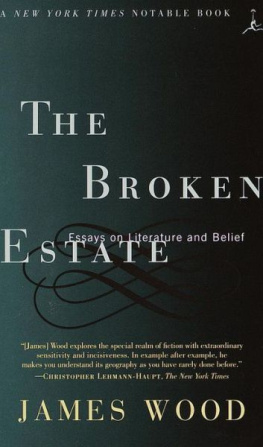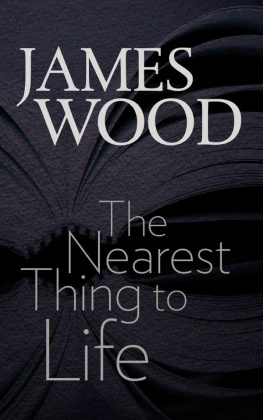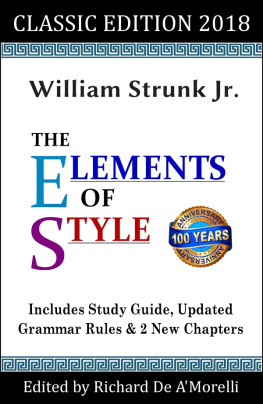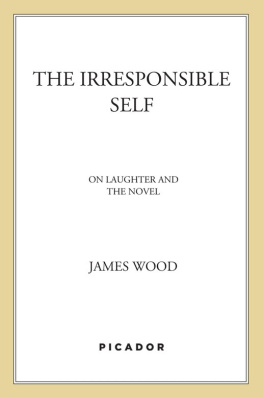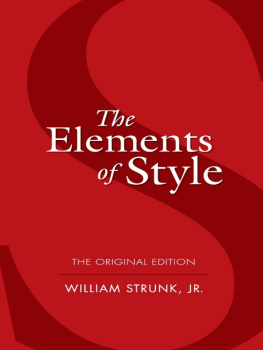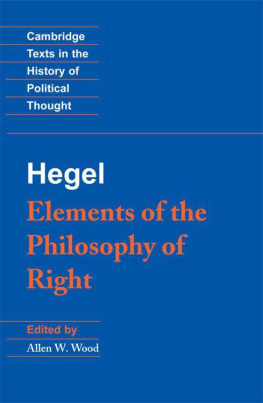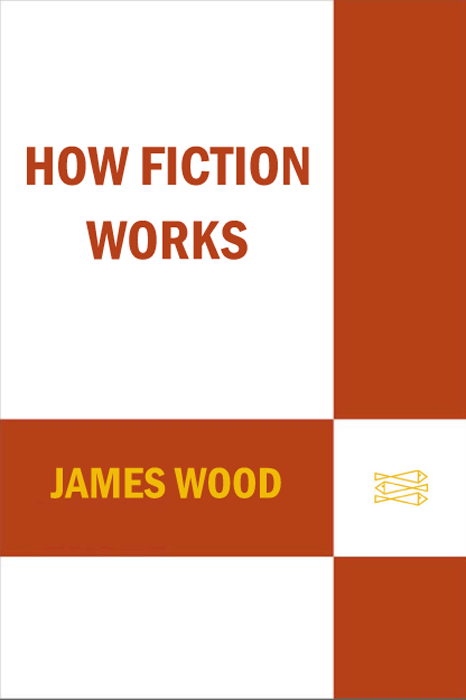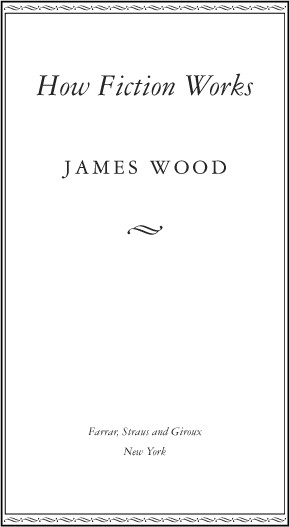Preface
In 1857, John Ruskin wrote a little book called The Elements of Drawing. It is a patient primer, intended, by casting a critics eye over the business of creation, to help the practicing painter, the curious viewer, the ordinary art lover. Ruskin begins by urging his readers to look at natureto look, say, at a leaf, and then to copy it in pencil. He includes his own drawing of a leaf. He moves from a leaf to a painting by Tintoretto: notice the brushstrokes, says Ruskin, see how he draws the hands, look at how he pays attention to the shading. Step by step, Ruskin takes his readers through the processes of creation. His authority comes not from his own technique as a draftsmanhe was an accomplished artist but not a greatly gifted onebut from what his eye has seen and how well, and his ability to transmit that vision into prose.
There are surprisingly few books like this about fiction. E. M. Forsters Aspects of the Novel, published in 1927, is canonical for good reason, but now seems imprecise. I admire Milan Kunderas three books on the art of fiction, but Kundera is a novelist and essayist rather than a practical critic; occasionally we want his hands to be a bit inkier with text.
My two favorite twentieth-century critics of the novel are the Russian formalist Viktor Shklovsky and the French formalist-cum-structuralist Roland Barthes. Both were great critics because, being formalists, they thought like writers: they attended to style, to words, to form, to metaphor and imagery. But Barthes and Shklovsky thought like writers alienated from creative instinct, and were drawn, like larcenous bankers, to raid again and again the very source that sustained themliterary style. Perhaps because of this alienation, this aggressive passion, they come to conclusions about the novel that seem to me interesting but wrongheaded, and this book conducts a sustained argument with them.
And both are specialists, writing, in the end, for other specialists; Barthes in particular does not write as if he expects to be read and comprehended by any kind of common reader (even one who is in training for un-commonness ).
In this book I try to ask some of the essential questions about the art of fiction. Is realism real? How do we define a successful metaphor? What is a character? When do we recognize a brilliant use of detail in fiction? What is point of view, and how does it work? What is imaginative sympathy? Why does fiction move us? These are old questions, some of which have been resuscitated by recent work in academic criticism and literary theory; but I am not sure that academic criticism and literary theory have answered them very well. I hope, then, that this book might be one which asks theoretical questions but answers them practicallyor to say it differently, asks a critics questions and offers a writers answers.
If the book has a larger argument, it is that fiction is both artifice and verisimilitude, and that there is nothing difficult in holding together these two possibilities. That is why I have tried to give the most detailed accounts of the technique of that artificeof how fiction worksin order to reconnect that technique to the world, as Ruskin wanted to connect Tintorettos work to how we look at a leaf. As a result, the chapters of this book have a way of collapsing into one another, because each is motivated by the same aesthetic: when I talk about free indirect style I am really talking about point of view, and when I am talking about point of view I am really talking about the perception of detail, and when I am talking about detail I am really talking about character, and when I am talking about character I am really talking about the real, which is at the bottom of my inquiries.
A Note on Footnotes and Dates
Mindful of the common reader, I have tried to reduce what Joyce calls the true scholastic stink to bearable levels. Footnotes draw attention only to obscure or otherwise hard-to-find sources; in them, I give the date of first publication but not the location or publisher (these facts being nowadays much more easily attainable than they used to be). In the text itself, I have repressed most of the publication dates of the novels and stories I discuss; in a bibliography, I list all those novels and stories in chronological order, with dates of first publication provided.
As a teenager I was very taken by the rather fancy note to Ford Madox Fords The English Novel: This book was written in New York, on board the S.S. Patria, and in the port and neighbourhood of Marseilles during July and August, 1927. I cannot claim any proximate glamour, nor a similar feat of library-less memory, but in the spirit of Ford, I can say that I have used only thebooks I actually ownthe books at hand in my studyto produce this little volume. I can also add that, except for a paragraph here and there, none of it is previously published.
Narrating
1
The house of fiction has many windows, but only two or three doors. I can tell a story in the third person or in the first person, and perhaps in the second person singular, or in the first person plural, though successful examples of these latter two are rare indeed. And that is it. Anything else probably will not much resemble narration; it may be closer to poetry, or prose-poetry.
2
In reality, we are stuck with third-and first-person narration. The common idea is that there is a contrast between reliable narration (third-person omniscience) and unreliable narration (the unreliable first-person narrator, who knows less about himself than the reader eventually does). On one side, Tolstoy, say; and on the other, Humbert Humbert or Italo Svevos narrator, Zeno Cosini, or Bertie Wooster. Authorial omniscience, people assume,
3
For Sebald, and for many writers like him, standard third-person omniscient narration is a kind of antique cheat. But both sides of this division have been caricatured.
4
Actually, first-person narration is generally more reliable than unreliable; and third-person omniscient narration is generally more partial than omniscient.
The first-person narrator is often highly reliable; Jane Eyre, a highly reliable first-person narrator, for instance, tells us her story from a position of belated enlightenment (years later, married to Mr. Rochester, she can now see her whole life story, rather as Mr. Rochesters eyesight is gradually returning at the end of the novel). Even the apparently unreliable narrator is more often than not reliably unreliable. Think of Kazuo Ishiguros butler in


